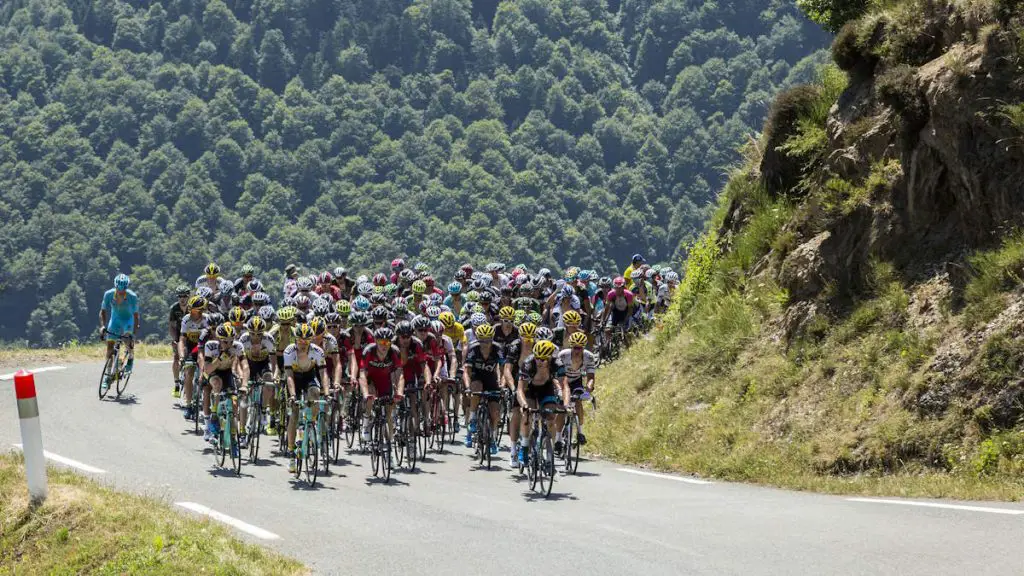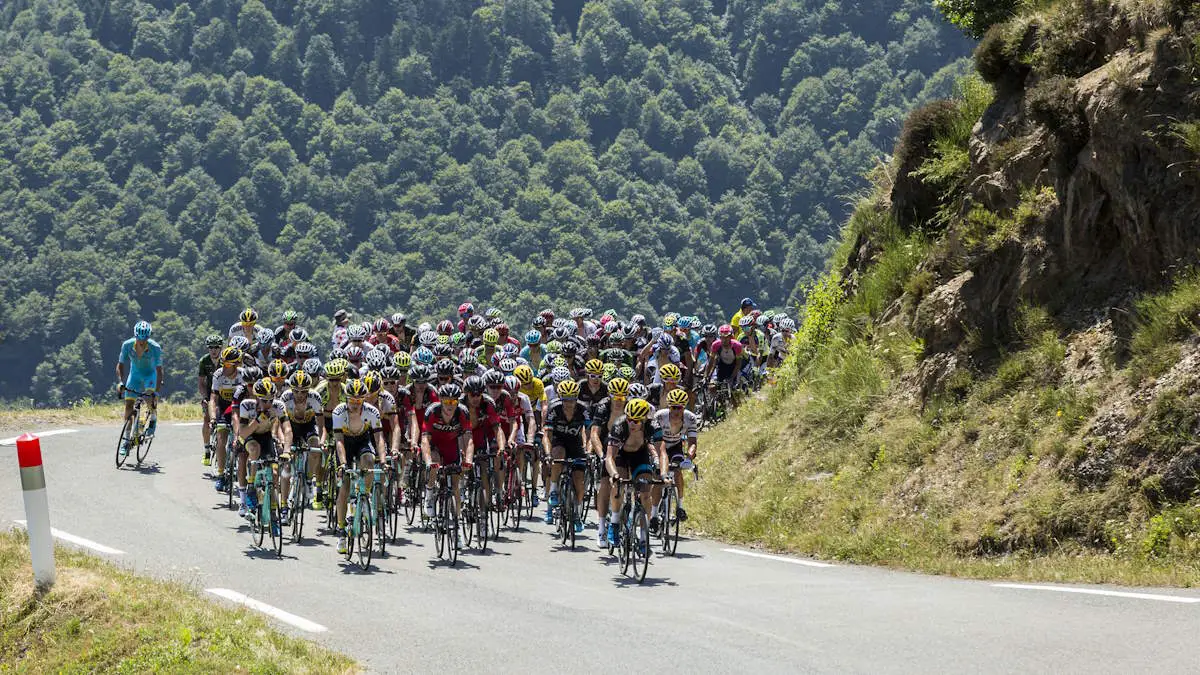Professional road cycling is an intriguing mix of individual grit, team strategy, and a meticulous understanding of aerodynamics. Central to these elements is the formation known as the “peloton,” a French term meaning ‘platoon’ or ‘pack.’ It usually translates into English as the “main bunch”. In cycling, the peloton is the large group of cyclists bunched together, a spectacle familiar to fans of races like the Tour de France, the Giro d’Italia, or the Vuelta d’España. But the peloton is more than a visual spectacle; it’s a dynamic, energy-saving tactic critical to race success.
Understanding why cyclists form the peloton requires a basic grasp of aerodynamics. The cyclists at the front of the group confront the maximum air resistance, shielding those behind and creating a draft. This draft significantly reduces the energy required by following riders to maintain speed. Consequently, cyclists take turns at the front, absorbing the brunt of the resistance, then dropping back to recover, while others take the lead.
The Role of Domestiques in the Peloton
In a team, a crucial set of riders called “domestiques” often take up these strenuous front positions. The term “domestique” translates to “servant,” and these riders serve the team’s leaders by expending their energy at the front of the main bunch. Their tireless work allows the team leaders to stay comfortably embedded in the group, shielded from the wind, and able to conserve energy until it’s most needed.
Domestiques perform other essential roles as well. They might chase down a ‘breakaway,’ a group or individual rider that has managed to separate from the peloton, aiming to limit their advantage. Additionally, they ferry food and drinks from team cars to their leaders, ensuring the leading riders stay nourished without having to fall back to the vehicles themselves.
Conserving Energy of Each Rider
While staying within the peloton, the leaders conserve energy until critical parts of the race, such as challenging climbs or potentially race-decisive moments. At such junctures, the peloton’s configuration can rapidly alter, either to set up a team leader for an attack or to respond to moves from rival teams. This dynamic reformation is a blend of anticipation, strategy, and teamwork and is crucial to the outcome of the race.
Energy conservation within the peloton becomes paramount, especially during the three grueling weeks of a Grand Tour. The races are often won by the freshest rider, not necessarily the fastest. Therefore, cyclists continuously focus on conserving energy for the critical stages of the race. By riding in the peloton, they achieve substantial energy savings, benefiting from reduced air resistance.

A big group of cyclists moves at a significantly faster pace than a lone rider primarily due to the benefits of aerodynamics and group effort. The lead riders in the peloton break the wind, creating a slipstream or a low-pressure pocket behind them. This phenomenon reduces the air resistance for the following riders, enabling them to maintain higher speeds with less effort. Additionally, the workload of leading the group and battling air resistance is shared among multiple riders, allowing for brief periods of respite and recovery. Thus, through energy conservation and collective effort, a group of riders can maintain higher average speeds over extended distances compared to a solitary cyclist.
In conclusion, the peloton is a microcosm of professional road cycling itself, reflecting the complex interplay of individual effort, team strategy, and aerodynamics. The inclusion of domestiques, their roles, and the peloton’s functions underline cycling’s tactical richness. The peloton not only shapes the flow and outcome of the race but is also instrumental in a team’s bid for victory. It’s a strategic formation that perfectly illustrates the saying “Unity is strength,” demonstrating that cycling is as much about team tactics as it is about individual prowess.
Sources
- Peloton on Wikipedia
- Study: “Aerodynamic drag in cycling pelotons: New insights by CFD simulation and wind tunnel testing” on the Science Direct website
- What Is a Time Trial in the Tour de France? - July 18, 2025
- Who Wears the Yellow Jersey in the Tour de France, and What does it Mean? - July 18, 2025
- Tour de France Explained for Newbies - July 5, 2025


